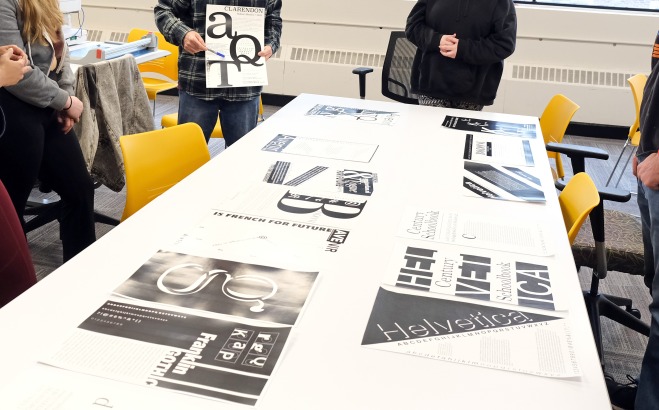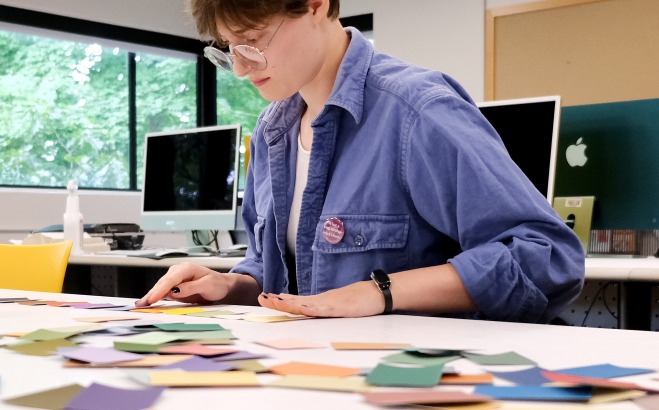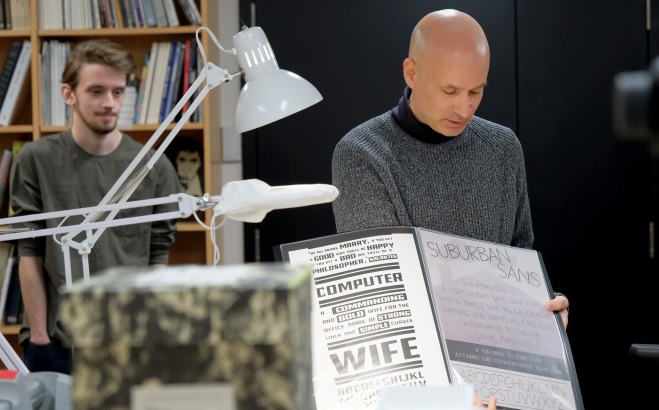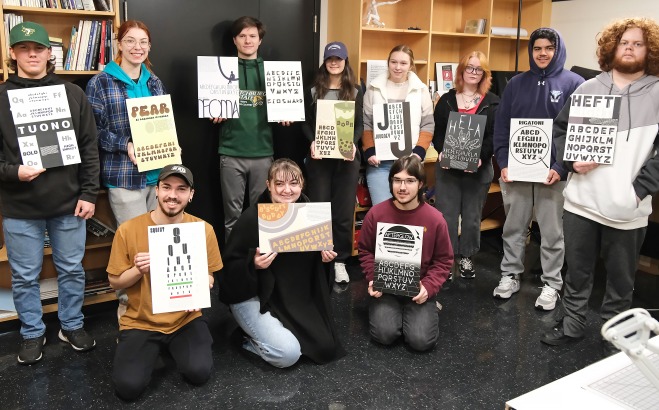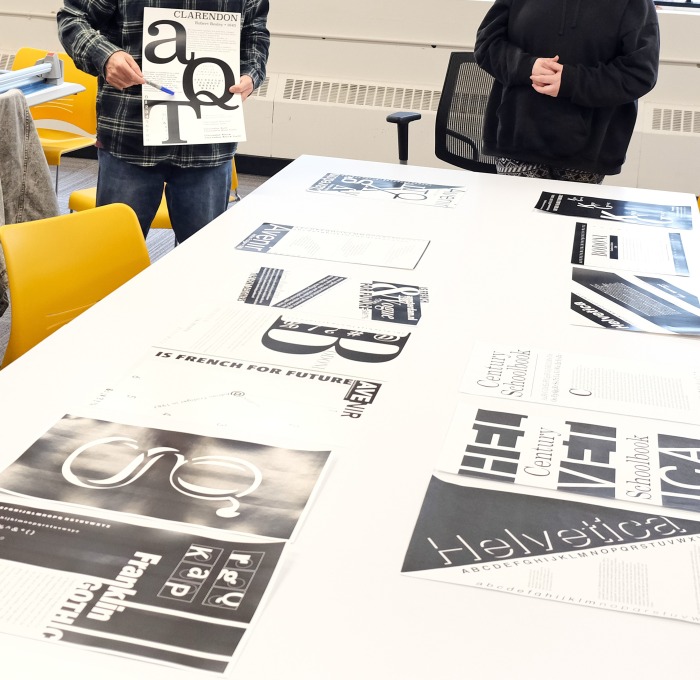
In Short
Graphic design is an ever-changing field and a fulfilling career with many diverse areas; book design, visual identity and branding, package design, website design, exhibition design, motion graphics, advertising, data visualization, environmental design, user experience design, and illustration.
What we're working on




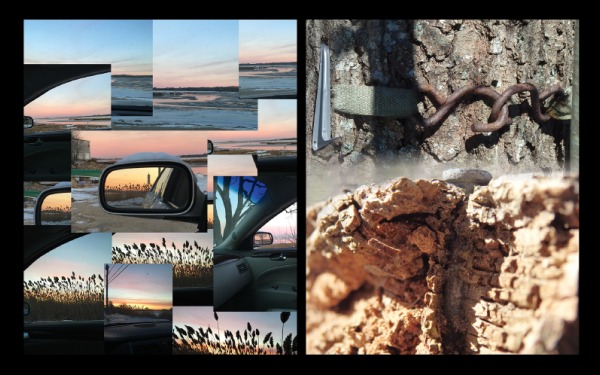
Program Overview
Graphic designers are visual communicators skilled in art, design, critical thinking, observation, and technology. They create animations, apps, books, brands, exhibitions, experiences, fonts, logos, magazines, movie titles, packaging, websites, and visual identities. It is a diverse profession full of exciting job opportunities.
The Graphic Design concentration gives students the foundation needed to enter and adapt to this ever-changing profession. The curriculum is shaped to foster critical and creative thinkers through experiential learning and risk-taking, where knowledge is gained through doing. Faculty work closely with students, striving to help them cultivate lifelong skills to continually develop over a lifetime.
To view student work samples check out these links:
Motion Design Compilation 1 from Jon Krasner Vimeo.
Our students become professional designers that can be found working in studios and agencies across the United States. They become art directors, high school teachers, and university professors. Many have attended graduate school nationally and abroad.
Graphic Design faculty hold MFA degrees and are practicing designers in the field, specifically in motion graphics and font design. You can view their profiles here.
To view more student work samples check out these links:
The department houses two Macintosh computer labs equipped with Adobe Creative Cloud and a print room with color inkjet and laser printers and bookbinding equipment. Graphic design students have a dedicated, analog work space with cutting mats, a graphic design and typography library, a traditional letterpress, color research materials (Pantone books), and storage for student work.
Aside from the courses and departmental activities, the faculty invite internationally renowned graphic designers to give class lectures and serve as guest critics.
In addition to the graphic design concentration we also offer a minor. Learn more on the graphic design minor page.
It is thanks to the wonderful professors in the Graphic Design concentration that I was able to find my unique set of talents as a designer through the variety of courses offered. The creative encouragement I received will stay with me for life and regularly influence the way I create as a poster designer in the film industry.
Experiential Opportunities and a Look Inside the Courses
Internships
Study Abroad
Visions
Undergraduate Research Conference
Typography
Color Dynamics
Intro to Graphic Design
Typography Printmaking
Font Design Student Work Exhibition
Curriculum and Other Information
- BS, Graphic Design Concentration, Communications Media - Program information from the University Catalog.
- Four-Year Plan of Study - Required and elective courses for program completion.
B.S. in Communications Media
- Students should demonstrate proficiency in the core tools and skills of their discipline.
- Students should be able to apply aesthetic principles to their work by developing and defending a portfolio that demonstrates craftship and meets professional standards for their discipline.
- Students should be able to explain how their work fits in the historical and theoretical context of their discipline.
- Students should apply core theoretical principles to the analysis and critique of media.
- Students should recognize and apply ethical perspectives to their work.
- Arts Administrator
- Commercial Artist
- Graphic Designer
- Illustrator
- Layout Artist
- Production Designer
- Web Designer




